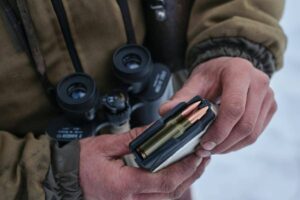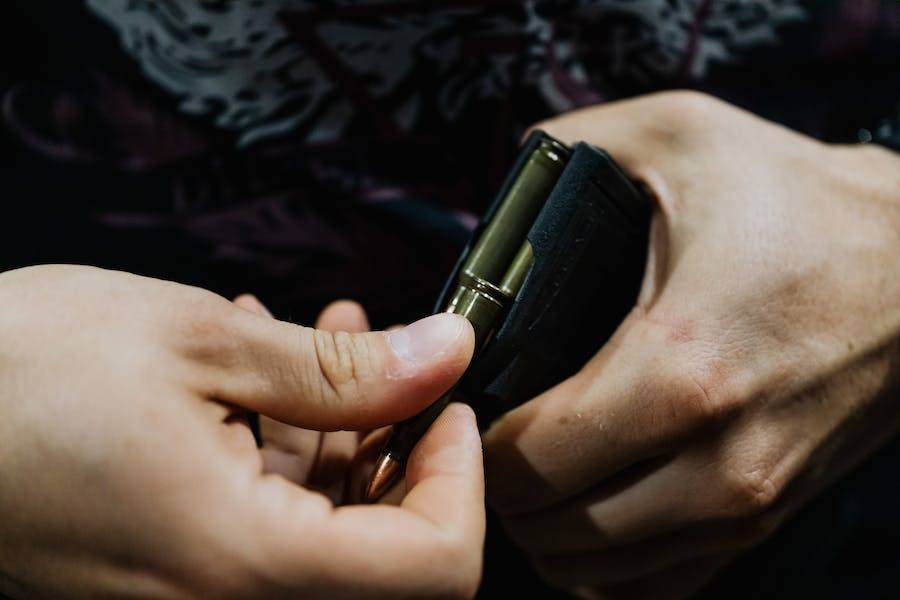Table of Contents
In the world of firearms, the .30-30 Winchester and .44 Magnum are two iconic rounds known for their distinct characteristics and wide range of applications.

This article aims to delve into a detailed comparison of these two cartridges, examining their histories, key features, ballistic performances, applications in hunting, ammunition availability and cost, options for rifles, and the shooting experience each offers.
.30-30 Overview
History and Development
The .30-30 Winchester, also known as .30 WCF (Winchester Center Fire), was first introduced in 1895. It was the USA’s first small-bore, sporting rifle cartridge designed for smokeless powder.
Over the years, its popularity has grown due to its effective performance in hunting medium-sized game.
Key Features
The .30-30 cartridge features a rimmed, bottleneck case, and typically fires a bullet weighing around 150-170 grains.
It is known for its moderate recoil and effective terminal ballistics up to 200 yards, making it a favorite among deer hunters.
.44 Magnum Overview
History and Development
The .44 Remington Magnum, commonly known as the .44 Magnum, was introduced in 1955. It was initially made famous by Clint Eastwood’s character, “Dirty Harry.”
Although designed as a handgun round, the .44 Magnum has found favor among some hunters as a rifle cartridge.
Key Features
The .44 Magnum cartridge typically propels a 240-grain bullet at velocities over 1,200 feet per second. Its rimmed, straight-wall case is ideal for reloading.
The .44 Magnum delivers a heavy blow, making it suitable for hunting larger game at closer distances.
Ballistics and Performance
.30-30 Ballistics
The .30-30 Winchester, with a 150-grain bullet, can achieve muzzle velocities of around 2,390 feet per second and muzzle energy of about 1,902 foot-pounds.
Its trajectory is relatively flat out to about 150 yards.
.44 Magnum Ballistics
The .44 Magnum, when loaded with a 240-grain bullet, can deliver muzzle velocities of around 1,180 feet per second and muzzle energy of 741 foot-pound when fired from a rifle.
It’s known for its stopping power at closer ranges.
Applications
Hunting With .30-30
The .30-30 Winchester has been a staple in deer hunting for over a century. Its effective range and moderate recoil make it suitable for hunting deer, black bear, and other medium-sized game.
Hunting With .44 Magnum
The .44 Magnum is a versatile round that can be used effectively for hunting both medium and larger game, including deer, hogs, and black bear, especially at closer ranges where its stopping power shines.
Ammunition Availability and Cost
.30-30 Ammunition
.30-30 ammo is widely available and comes in various types, including soft point, hollow point, and flex tip. The cost is moderate, making it an affordable choice for many hunters.

.44 Magnum Ammunition
.44 Magnum ammunition is also readily available, albeit typically at a higher cost than .30-30 ammo.
The variety of bullet types, including hollow points, soft points, and hard-cast lead, cater to different hunting needs.
Rifle Options
When it comes to selecting a rifle for either .30-30 Winchester or .44 Magnum rounds, there are several options available.
Choosing the right firearm depends on your intended use, comfort, and personal preference.
.30-30 Winchester Rifles
The .30-30 Winchester is most commonly associated with lever-action rifles.
These firearms are known for their reliability, ease of handling, and rapid cycling, making them ideal for hunting in dense, brushy environments.
Winchester Model 1894: This is one of the most popular lever-action rifles chambered for .30-30. It’s well-balanced, easy to handle, and has a solid reputation for accuracy and dependability.
Marlin Model 336: Another popular option, the Marlin 336, is praised for its robust construction and smooth action.
Its micro-groove rifling is designed to improve accuracy, making it a favorite among many deer hunters.
.44 Magnum Rifles
The .44 Magnum round isn’t just for revolvers. It can also be used in rifles, offering more power and range than when fired from a handgun.
Henry Big Boy: This lever-action rifle is a popular choice for .44 Magnum enthusiasts. It combines classic design with modern performance, delivering a powerful punch with every shot.
Ruger Deerfield Carbine: A semi-automatic option, this rifle offers quick follow-up shots, and its rotary magazine ensures reliable feeding.
Its compact size makes it a good choice for hunting in thick brush or carrying over long distances.
Both .30-30 Winchester and .44 Magnum rounds offer a variety of rifle options to suit different shooting preferences and needs.
Whether you choose a lever-action or a semi-automatic rifle, both calibers provide reliable performance for hunting and sport shooting.
Recoil and Shooting Experience
Shooting with .30-30
The .30-30 Winchester, known for its moderate recoil, offers a manageable shooting experience. When fired, shooters typically describe the recoil as a firm push rather than a sharp kick.
This characteristic makes the .30-30 a popular choice among novice hunters and those who prefer a more comfortable shooting experience.
The recoil of the .30-30 is also absorbed well by the lever-action rifles it’s commonly paired with.
These rifles, known for their balance and relative lightness, complement the .30-30’s recoil characteristics, making for a pleasant shooting experience that many hunters appreciate.
Shooting With .44 Magnum

The .44 Magnum, on the other hand, is known for its substantial recoil. When fired from a handgun, the .44 Magnum can deliver a hefty kick that may be uncomfortable for some shooters.
However, when this round is fired from a rifle, the experience is quite different.
The heavier weight of a rifle compared to a handgun can help absorb some of the .44 Magnum’s recoil, reducing the kick felt by the shooter.
It’s also worth noting that the .44 Magnum’s significant recoil contributes to its impressive stopping power, which can be an advantage in hunting scenarios where a quick, clean kill is desired.
Recoil Management
Understanding and managing recoil is key to a positive shooting experience and crucial for accuracy. For both the .30-30 and .44 Magnum, adopting a proper stance and grip can help manage recoil.
Additionally, choosing a firearm that fits well and suits the shooter’s strength and body type can also help reduce the impact of recoil.
With the .30-30, the moderate recoil can be managed even by novice shooters with basic training and practice.
For the .44 Magnum, more experience and skill may be required to effectively manage the substantial recoil.
However, with time and practice, even the heavy recoil of the .44 Magnum can be mastered, providing a unique and satisfying shooting experience.
Both the .30-30 Winchester and the .44 Magnum offer distinct shooting experiences shaped largely by their respective recoil characteristics.
Choosing between them will depend on the shooter’s comfort with recoil, the application for which the firearm is intended, and personal preference.
Conclusion
In conclusion, both the .30-30 Winchester and .44 Magnum have their unique strengths and applications.
The .30-30 is a versatile cartridge with a proven track record in hunting medium-sized game, while the .44 Magnum offers considerable stopping power for larger game at closer ranges.
The choice between the two will depend on the specific needs and preferences of the shooter.
Both rounds, however, continue to hold their own in the world of hunting and shooting sports, testifying to their enduring appeal and effectiveness.

